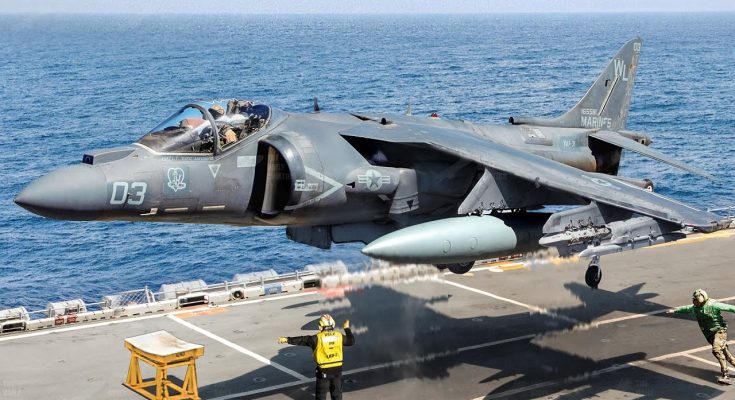Desperate Solution the U.S. Found to Land Aircraft with Damaged Landing Gear at Sea
Landing an aircraft on an aircraft carrier is already a high-stakes operation. The process demands precision, timing, and perfect coordination between the pilot and the carrier crew. But when an aircraft’s landing gear is damaged, the stakes rise exponentially. For U.S. Navy pilots facing this perilous situation, an innovative and desperate solution was developed to ensure the safe return of aircraft with compromised landing gear during carrier landings at sea.
The Crisis: Damaged Landing Gear
The scenario is every aviator’s nightmare: a fighter jet or bomber, mid-flight on a mission, encounters a malfunction or damage to its landing gear. Without functional landing gear, the aircraft cannot safely land on an aircraft carrier, where traditional methods of landing are out of the question. In such cases, the pilot is left with few options: attempt a dangerous landing and risk catastrophic failure or abandon the aircraft, potentially leaving it to crash at sea.
This problem became most critical during combat operations or high-intensity training exercises where time and fuel were running out. There was no time to call for a tow or return to base on the mainland. That’s where the U.S. Navy came up with a dramatic but effective solution: the “belly landing” using arrestor cables.
The Solution: Belly Landing with Arrestor Cables
In the 1960s, as U.S. Navy jets faced the possibility of gear failure, engineers and flight crews worked together to develop a last-resort method of landing an aircraft without the traditional landing gear.
The technique involves flying the aircraft with a damaged or missing landing gear, aligning it with the aircraft carrier’s landing strip, and using the carrier’s arrestor wire system to bring the aircraft to a safe, albeit rough, stop.
The arrestor wire system is designed to catch a tailhook on the jet, which is deployed just before landing. The tailhook then engages one of several large steel cables stretched across the landing strip, rapidly decelerating the aircraft in just a few seconds. In the case of a damaged or missing landing gear, this system becomes even more crucial.
However, the landing itself is far from standard. Pilots have to approach with extreme care, landing on the belly of the aircraft, relying on the arrestor hook to bring them to a stop rather than their landing gear. The belly landing means that the aircraft must be able to glide gently enough to prevent the fuselage from disintegrating upon impact with the carrier’s deck.
The Process: Precision and Timing
Once a pilot realizes that the landing gear is compromised, the strategy is clear: fly the aircraft to the nearest carrier, engage the arrestor hook, and prepare for a belly landing. The crew on the ship would typically prepare for the worst, including setting up additional fire-fighting teams and emergency medical crews to be ready at a moment’s notice. Once the aircraft is in position, the pilot would aim for the perfect landing spot, aligning the aircraft as best as possible for the safest belly landing.
In many cases, the belly landing was successful, thanks to the arrestor cables and the skill of the pilot. The aircraft’s tailhook would catch the cable, and the arresting system would bring the jet to a sudden stop. Though the aircraft might suffer extensive damage to its underside, the pilot’s life would be saved, and the aircraft could be recovered for potential repair—making this desperate solution a success.
A Legacy of Innovation
The use of arrestor cables in emergency belly landings continues to be a critical part of Navy flight safety procedures. Over time, the development of advanced landing gear systems, robotic safety mechanisms, and flying safety protocols has drastically reduced the risk of such emergency landings. But even today, when aircraft are deployed on missions over the ocean, the lessons learned from these dangerous, last-ditch solutions continue to shape flight safety and operational readiness.
This desperate solution, born out of necessity, has saved countless lives and ensured that even in the direst circumstances, a U.S. Navy pilot can return to base—against the odds.



